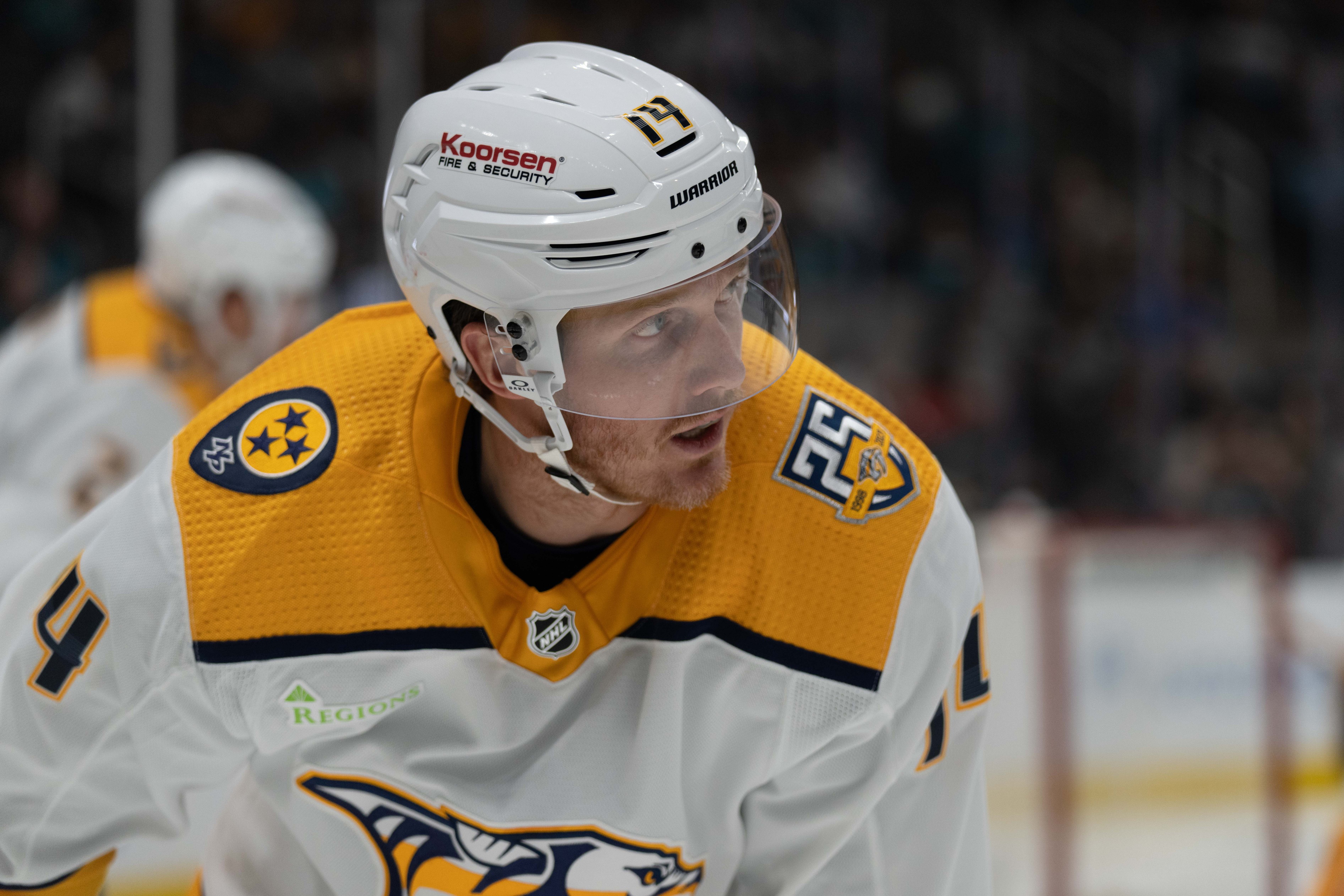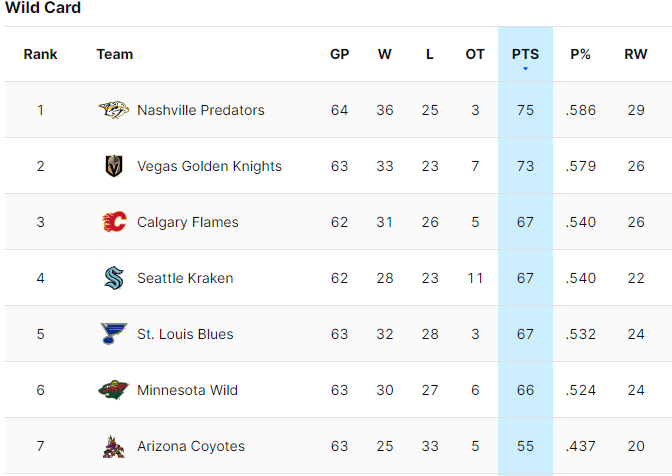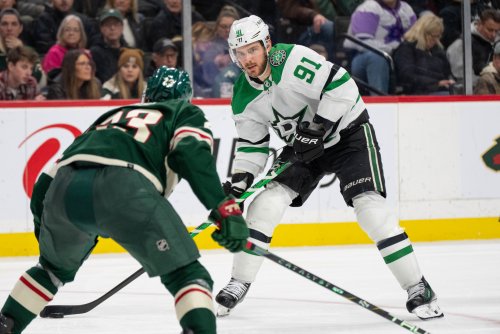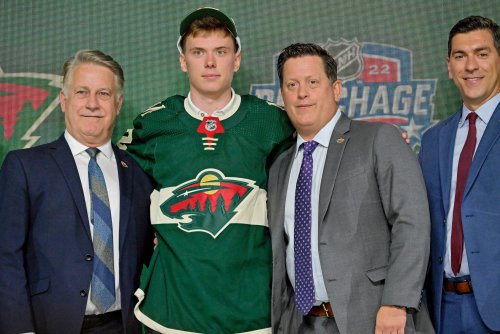
Following their first-round loss to the Dallas Stars last season, the Minnesota Wild entered the summer with plenty of uncertainty about their roster. The worst of the Zach Parise and Ryan Suter dead cap hits were about to hit their highest totals since those fateful buyouts two summers ago. Yet a few key players were about to hit free agency, and GM Bill Guerin had to make difficult decisions in filling out a roster he expected to compete for a playoff spot this year.
One of the most important decisions was whether to re-sign Marcus Johansson or Gustav Nyquist, who the Wild also picked up at the deadline. Johansson and Nyquist had performed well after Minnesota traded for them and were looking for new contracts. But Guerin couldn’t afford both of them. He had to choose.
Guerin chose to sign Johansson, the more cost-effective winger. It was the final nail in the coffin of his roster construction over the past few years. Nyquist signed with Nashville, and that has been a catalyst, sling-shotting the Predators past Minnesota in the Central Division standings this season.
I’m not saying Minnesota signing Johansson over Nyquist has been the only reason Nashville is on the rise while the Wild are stalled outside the playoff bubble. But it has made a meaningful difference. However, the process behind the signing has become evident over the past few years, finally caving in the Xcel Energy Center's roof this season.
But before we dive into the signings themselves and their eventual cost to both teams, it’s important to get ahead of what is probably your biggest objection so far: the dead cap hits. The Wild have a unique situation with a shade over $14.7 million on the ledger this year and another $14.7 million next year before those become a more manageable number.
But the Predators aren’t much different. Shockingly, if it weren’t for the Wild’s situation, NHL media would be talking ad nauseam about how Nashville is competing even in a window where a ton of dead money is sitting on their books. Last summer, Barry Trotz took over as GM and traded away longtime center Ryan Johansen but retained 50% of his $8 million salary. On top of that, he bought out highly-paid Matt Duchene to go along with Kyle Turris' long-term buyout, which was already affecting their cap.
The Predators are operating with $4.5 million in dead money this year. That jumps to $7.5 million and $8.5 million in the next two seasons. Like Minnesota, Nashville is in the middle of its dead cap hit era. And while the Wild’s cap hits are much higher than Nashville’s will ever be during this period, the point still stands. Like Minnesota, the Predators have had to be judicial in their spending and roster makeup to remain competitive during this window.
Knowing that makes it easy to compare Nashville and Minnesota's situations. It’s become clear one team is ascending while the other is floundering in the middle of a logjam of wild-card hopefuls.

So how did we get here? How can two teams with similar cap situations go in such different directions in the division standings, like two ships passing in the night? This summer was a microcosm of how each team has approached roster construction over the past couple of years, leading to such a flip.
Minnesota was coming off another disappointing first-round exit. However, fans remained optimistic because of the impact rookies like Brock Faber and Marco Rossi would have on a roster that desperately needed production from players on their entry-level deals. All they needed to do was spend what little money they had on successful players to plug other holes.
On the other hand, the Predators had traded away some key pieces at last year’s deadline. Yet their young players were impressive down the stretch, and Juuse Saros' magic in net almost snuck them into the playoffs. Once the offseason began, Nashville immediately decided to buy out Duchene and trade Johanson. Just as Guerin had done in Minnesota a few years prior, Trotz wanted a culture change.
Trotz went to work with less cap space and more holes on Nashville's roster. He identified crucial players to fill roles on his roster, not worrying as much about cost. Trotz filled his roster's margins with young, cheap players they had drafted and developed over the years.
The Wild went in a different direction, one they had been in for a few years. But this time, it finally caught up to them.
The first move was to sign a winger to play next to Matt Boldy in a top-6 role. Guerin quickly decided that it would be either of their two trade deadline pickups, Johansson or Nyquist. While Johansson had shown success with Boldy, his track record made it clear that it was unsustainable. Johansson could catch fire with Boldy again in short spurts, but Nyquist was the better player -- in the postseason and his most recent seasons.
But Guerin chose Johansson primarily due to cost. After jumping from team to team the past few years, including two stints in Minnesota, Johansson was willing to take less money to stay. That was important to Guerin. He had yet to re-sign goaltender Filip Gustavsson and wanted to add a veteran presence to his roster.
Nyquist likely wanted to reach free agency and cash in for a higher AAV. He eventually signed in Nashville for $1.185 million more per year than Johansson. Trotz was fine paying the higher price because he counted on previous draft picks to step in and fill out the fringes of his roster on team-friendly deals. Eight months later, Guerin's decision to save just a shade over $1 million in cap space has meaningfully backfired.
Johansson has been abysmal this year, just like he was in his first stint in Minnesota. He’s been nonexistent most nights and unable to play the type of physical game required from players who aren't potting 30 goals a season. Johansson has played with myriad linemates this year as Dean Evason and John Hynes tried their best to put him in a position to succeed. His play has been so bad, one has to wonder if the decision last summer should never have even included Johansson, no matter the cost.
On the other hand, Nyquist has been an impact player for Nashville. His high IQ has allowed him to become stapled to Filip Forsberg’s wing and the Swede has made the most of it, posting 56 points 64 games. Johansson has scored at nearly half the rate of Nyquist this season.
Guerin’s cost-cutting decision hasn’t been worth it. Saving just over a million in cap space for the difference between Nyquist and Johansson, just so you can keep other marginal vets like Frederick Gaudreau on the roster, is a primary reason why the Wild have fallen out of the playoff race this year.
But the primary concern is that this strategy has not only influenced the Johansson-Nyquist decision. Nashville has done a much better job drafting and developing its players into serviceable NHLers. Meanwhile, the Wild have filled out the margins of their roster with aging vets on higher contracts, further hampering their ability to bring in impactful additions to the top of their lineup.
The Predators entered the season with ten players in the lineup whom they drafted after the first round. They had played significant time on Nashville's AHL squad, indicating that the Predators are developing players well in Milwaukee. The Wild had two such players, Connor Dewar and Brandon Duhaime, who they traded at the deadline.
The Predators didn’t just pass the Wild in the standings this season. It’s been brewing for quite some time. Guerin’s recent extensions of depth veterans just before the season started are only going to further separate Minnesota and Nashville in their age gap and competitive window.
Think you could write a story like this? Hockey Wilderness wants you to develop your voice, find an audience, and we'll pay you to do it. Just fill out this form.
-
 2
2
-
 1
1






Recommended Comments
Join the conversation
You can post now and register later. If you have an account, sign in now to post with your account.
Note: Your post will require moderator approval before it will be visible.